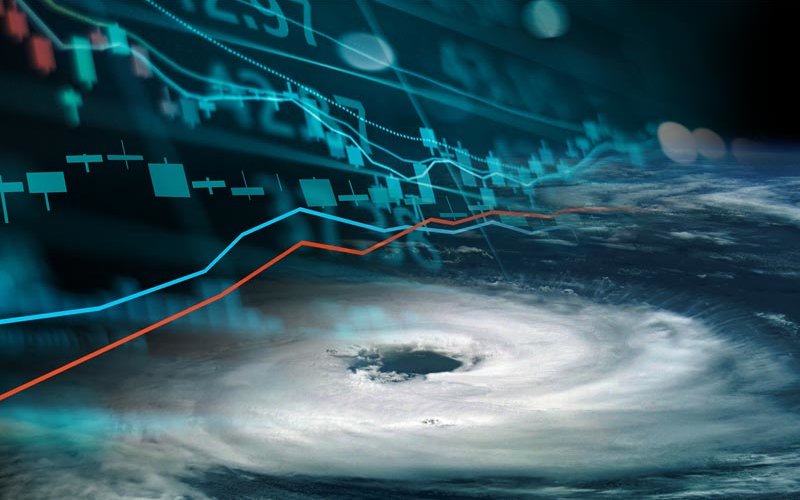
Climate change is shifting weather patterns, altering sea levels and reshaping animal habitats. But its impact is being seen beyond the natural world — even in areas such as investment markets.
More extreme and frequent weather events caused by climate change have a significant economic impact that ripples through the affected locality and its people to related entities, such as relief and insurance organizations, to state and federal government.
In the past, explains Carolyn Chang, professor of finance at Cal State Fullerton, the federal government bailed out people and organizations affected by disasters because no one else could afford to do so.
“Now the cost of these disasters has become so large that the government is strained to absorb the risk. Climate change-induced disasters are a threat to governments and the insurance industry.”
Starting in the 1990s, but particularly after Hurricane Katrina hit the Gulf Coast in 2005, the investment community has seen growing demand for derivative financial instruments called catastrophic bonds, or “cat bonds,” designed to allow more people to take on the risk of such calamities. There are earthquake cat bonds, hurricane cat bonds and even harvest cat bonds for disastrous planting cycles.
“Now the financial market participates in covering disaster risk,” says Chang.
Climate change-induced disasters are a threat to
governments and the insurance industry.
And why would an investor want to get involved with hurricane risk? It comes down to return.
“Disasters are high-risk propositions, so taking on that risk delivers a high return,” Chang explains. “Investors seeking high returns have been hard pressed to find them in traditional corporate bond markets, as interest rates have remained very low since the 2008 financial crisis. So they’ve turned to instruments like cat bonds.”
Chang has long been interested in research related to the pricing of derivatives — financial products whose value is based (derived) on the value of something else. In the case of a hurricane cat bond, its value is derived from physical measures like wind speed, rainfall levels and the radius of the storm.
Noting the increasing number of natural disasters, she began to center her derivative research on cat bonds and managing financial risk for hurricanes and tropical cyclones.
One promising area is Chang’s novel market-consensus hurricane forecasting model where she uses market transaction price changes for cat bonds to predict when a hurricane will make landfall, how destructive it will be and how the destructive power will evolve from inception to landing.
Traders of cat bonds use all hurricane forecasts available — public ones from places like the National Hurricane Center and private ones from meteorologists on staff at their financial institution — to make trading decisions and determine at what price to sell or buy such bonds.
Chang argues that these transaction prices represent a consensus of all hurricane forecasting models across the board; they are essentially a proxy for the latest news or information about a hurricane. And the market-based forecast should have an advantage over meteorological-based ones because it incorporates the latter plus additional insights from in-house proprietary forecasting models.
As the effects of climate change escalate, Chang continues her work, fully aware that it’s becoming increasingly important to do so.
Read Chang’s research papers to learn more about hedging the impact of climate change:
- Optimum Hurricane Futures Hedge in a Warming Environment: A Risk–Return Jump-Diffusion Approach
- Hedging the Impact of Climate Change in the Catastrophe Space
And market-consensus hurricane forecasting:
- Global Warming, Extreme Weather Events, and Forecasting Tropical Cyclones: A Market-Based Forward-Looking Approach